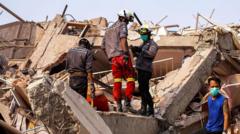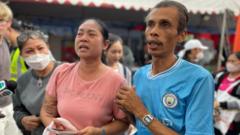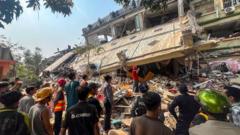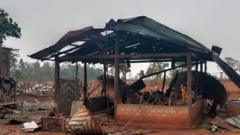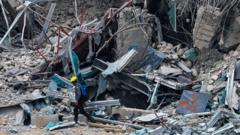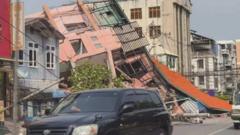In the wake of the 7.7-magnitude earthquake that struck Myanmar, the country’s extensive internet censorship has severely limited information flow regarding the disaster's impact, contrasting sharply with the immediate coverage of damage in neighboring Thailand.
Myanmar’s Internet Censorship Obscures Impact of Recent Earthquake

Myanmar’s Internet Censorship Obscures Impact of Recent Earthquake
The military junta's restrictions on the internet inhibit timely access to information and aid following a significant earthquake.
Following the recent earthquake that hit Myanmar, communications from the region have been alarmingly scarce, primarily due to stringent internet censorship imposed by the ruling military junta since their 2021 coup. As the seismic event occurred, social media swelled with images and videos from areas like Thailand, where the quake's tremors were felt, while Myanmar's narrative remained largely muted, highlighting a stark informational divide.
The military has long utilized internet blackouts and social media restrictions to suppress dissent and maintain control over the populace. This strategy has increasingly isolated the nation during crises, undermining the flow of vital data and impeding timely aid efforts. As a result, crucial information about the earthquake's aftermath, including damage assessment and casualties, is emerging slowly and with significant delays.
This earthquake, which struck central Myanmar at approximately 12:50 p.m. local time, turned out to be a formidable disaster, with reports of extensive destruction in nearby cities. Notably, the aftershocks continued to create concern, prompting a need for assessments that the junta-controlled media has struggled to provide, with many government websites reportedly going offline shortly after the quake.
International observers have acknowledged that the pervasive internet blocks, particularly in conflict-heavy regions, have further compounded the difficulties in acquiring real-time assessments. Joe Freeman, a Myanmar researcher at Amnesty International, underscored that the limitations of the communication networks have contributed significantly to the opacity facing international audiences trying to grasp the extent of the damage.
In stark contrast to the pre-coup era, when Myanmar's vibrant social media landscape allowed for rapid sharing of information and mobilization during crises, the current climate leaves many citizens unable to effectively document and disseminate information. The situation is particularly dire in areas afflicted by military conflict, where many rely on satellite services like Starlink to circumvent connectivity issues.
Overall, the situation encapsulates a broader narrative of how authoritarian controls over communication channels can exacerbate the hardships faced during natural disasters, isolating affected communities at critical moments when they need support and information the most. As Myanmar grapples with the aftermath, the impact of governmental censorship remains a profound obstacle to effective disaster response and recovery.




